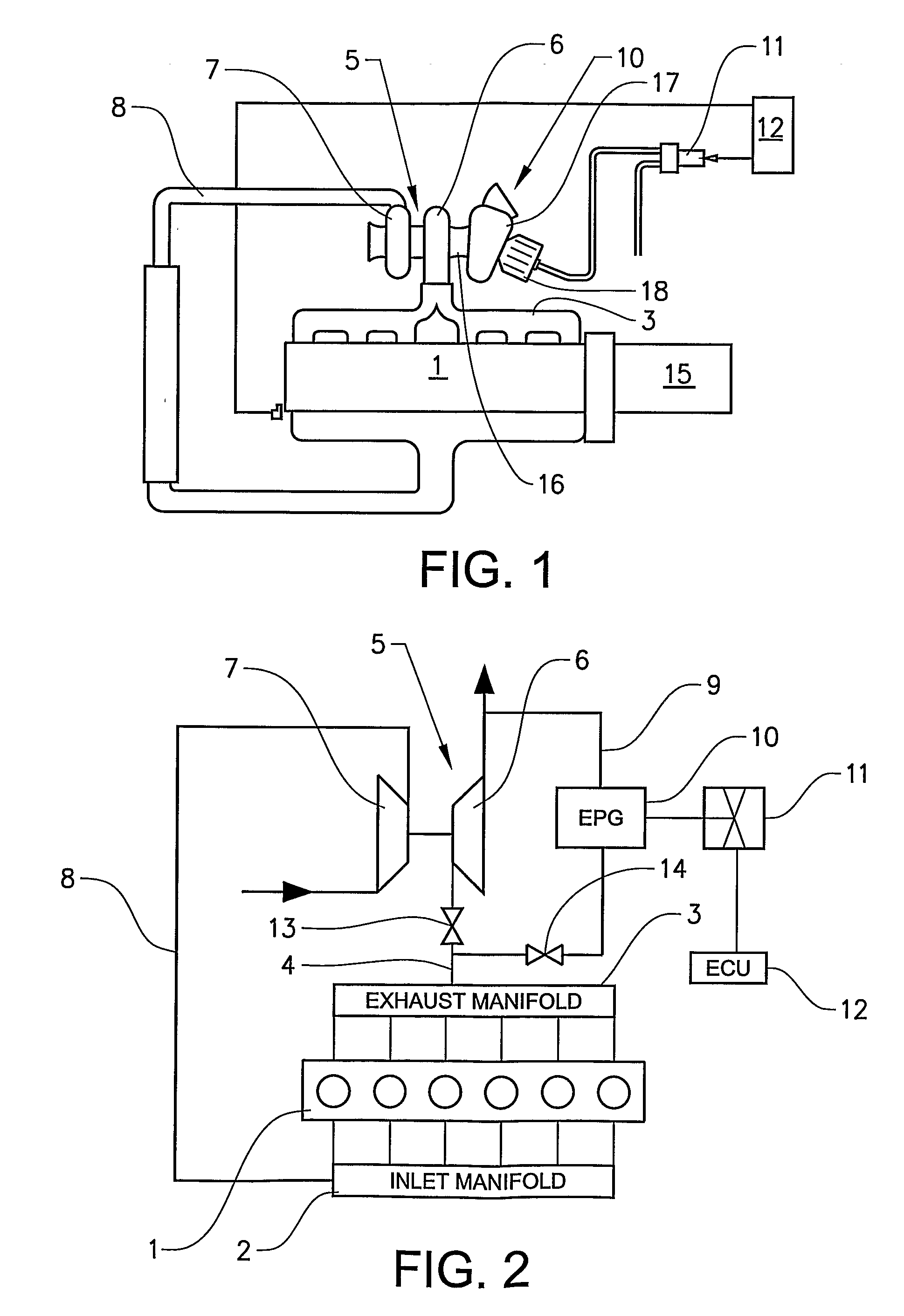Engine brake for vehicle
a technology for engine brakes and vehicles, applied in the direction of machines/engines, mechanical equipment, non-fuel substance addition to fuel, etc., can solve the problems of difficult control of such waste gates with desired accuracy, limited possibility of reducing epg to a desired size, and insufficient control of vgt with sufficient accuracy, etc., to achieve efficient flow control, improve control of the level of backpressure, and improve control of the effect of flow
- Summary
- Abstract
- Description
- Claims
- Application Information
AI Technical Summary
Benefits of technology
Problems solved by technology
Method used
Image
Examples
Embodiment Construction
[0039]FIG. 2 shows schematically a six-cylinder diesel engine 1. The engine is provided with an inlet manifold 2 and an exhaust manifold 3. The exhaust manifold 3 is connected to a main exhaust gas conduit 4 which in turn is connected to a turbo assembly 5. The turbo assembly comprises a turbine portion 6 and a compressor portion 7. The turbine 6 is connected to the main exhaust conduit 4 and the compressor portion 7 is connected to an air intake conduit 8 which in turn is connected to the inlet manifold 2. The main exhaust gas conduit 4 is further connected to a bypass conduit 9 downstream the exhaust manifold 3 and upstream the turbo assembly 5. An Exhaust Pressure Governor (EPG) 10 is located in the bypass conduit. The EPG 10 is connected to air pressure control valve 11 for regulating the air pressure from a source of compressed air (not shown). The control valve 11 is further connected to an Electronic Control Unit (ECU) 12 which provides output signals for turning the compress...
PUM
 Login to View More
Login to View More Abstract
Description
Claims
Application Information
 Login to View More
Login to View More - R&D
- Intellectual Property
- Life Sciences
- Materials
- Tech Scout
- Unparalleled Data Quality
- Higher Quality Content
- 60% Fewer Hallucinations
Browse by: Latest US Patents, China's latest patents, Technical Efficacy Thesaurus, Application Domain, Technology Topic, Popular Technical Reports.
© 2025 PatSnap. All rights reserved.Legal|Privacy policy|Modern Slavery Act Transparency Statement|Sitemap|About US| Contact US: help@patsnap.com


